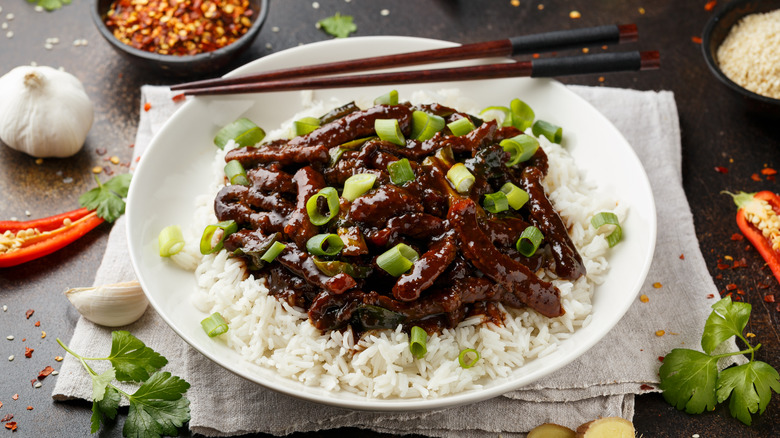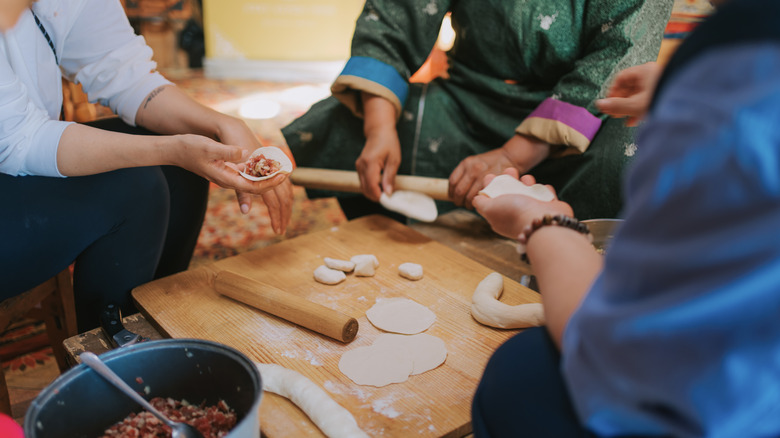Does Mongolian Beef Actually Come From Mongolia?
Mongolian beef has been a long-time favorite on Chinese restaurant menus. The dish isn't complicated in its ingredients, but manages to contain an explosion of flavor. Thinly sliced beef is stir-fried in little more than soy sauce, ginger, garlic, a little sweetener such as hoisin, and green onions. Although it's an excellent contribution to the hungry masses, you're not actually getting a taste of Mongolia at all when you order it.
Mongolian beef was most likely created in Taiwan by Chinese immigrants to the country in the middle part of the 20th century. Even stir-frying, the method of cooking the dish, is Chinese in origin. At the same time, Chinese and Taiwanese cuisine was becoming popular in the United States due to the number of immigrants coming west and opening restaurant businesses. Americans would have been attracted to a dish like Mongolian beef because the ingredients were familiar to them but it still offered a taste of exotic cooking. It may have been labeled as "Mongolian" as opposed to "Chinese" or "Taiwanese" simply for marketing purposes as Mongolia was generally more of a mysterious locale than the latter two countries.
In reality, there is really nothing inherently Mongolian about Mongolian beef, and you sure won't find it in the country it's named after. But you will find several excellent dishes using ingredients that you might not be so accustomed to. So, if it's exotic cuisine you're looking for, consider visiting.
Beef is actually rare in authentic Mongolian cooking
Mongolia is an Asian country tightly tucked in between Russia to the north and China to the south. While the cuisine here does contain plenty of meat, it's usually in the form of horse (which has caused scandal elsewhere), yak, camel, goats, and sheep. Wild greens and dairy also play prominent roles in Mongolian dishes, as do seasonal fruits and vegetables, and wheat products.
In Mongolia, you'll likely come across dumplings called buuz which are often filled with mutton (meat from fully grown sheep) and herbs, then cooked by steaming. If it's stir-fry you like, seek out tsuivan made with noodles, meat, and onions (perhaps somewhat similar to Mongolian beef, but with noodles). Real Mongolian barbecue (not the kind you know from mall food courts of the 1990s) is cooked via hot rocks and used in two dishes called khorkhog and boodog. The former takes meat, veggies, and aromatics, and cooks them in a pressure cooker along with hot stones to aid in the cooking process. Boodog is a time-consuming and special meal in which layers of meat, bones, hot stones, and vegetables are placed inside an animal skin. The whole package, of sorts, is then grilled over a fire.
If you're still keen on Americanized Mongolian beef, you probably don't have to search far to find it, or try a takeout-worthy homemade version to rival even the best restaurant option.

